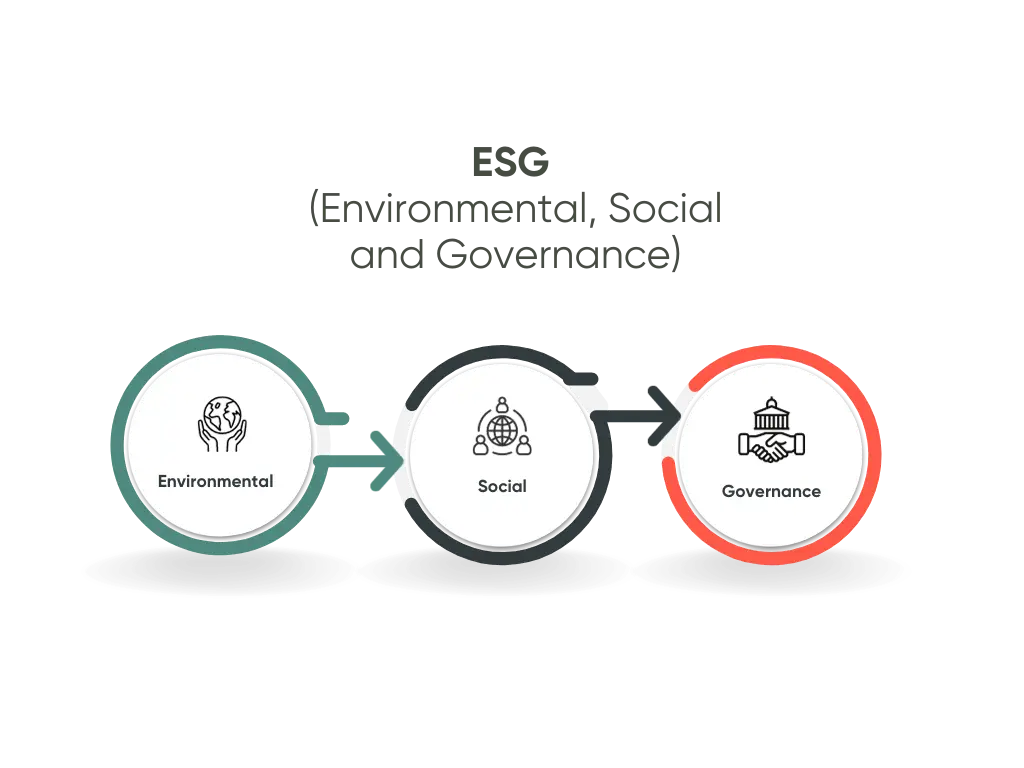
Keys to automating an ESG model
How to implement an ESG model according to Nova: we are experts in modelling and automating business performance management processes, supported by our technology partners who offer the best EPM solutions to the market.

Keys to automating an ESG model
The concept of ESG, the benefits of measuring ESG KPIs and what Nova can contribute to the automation of the model.
What is ESG?
The ESG concept emerges as an approach from which to respond to the need to guarantee the long-term SUSTAINABILITY of the company to its stakeholders. Sustainability understood as meaning that in a continuously changing environment, the company must remain viable indefinitely:
- Both in the face of risks to the company (e.g. scarcity of a resource, or resilience to climate change).
- The influence of the company on the environment must be sustainable.
Investor demand, regulation or the desire to promote sustainable value creation creates an expectation for companies to integrate Environmental, Social and Governance (ESG) and sustainability issues into their corporate strategy, decision making, and reporting.
This expectation creates clear opportunities for companies that take a proactive approach and creates risks for those that do not.

Benefits of ESG
The classic definition of the fundamentals of business says: Companies should pursue a maximization of profit. From this point of view, ESG criteria could become a hinderance to this, so why adopt them?
Today’s reality is that ESG criteria cannot be seen as insignificant or as not affecting the business world. But rather, they should be seen more and more clearly as something that may lead to financial risk or a decline in positioning if not incorporated into your corporate strategy. Companies that are better at addressing environmental, social and governance factors can reduce risks and considerably improve their competitiveness in the marketplace.
There are many benefits of incorporating ESG criteria in the company, of which the main ones are as follows:
- Advantageous access to finance.
- Improving trust, commitment, loyalty, as well as loyalty to the company of customers, investors, suppliers, administration and regulators, etc.
- Minimise risks.
- Improve the company's position in public and private tenders.
- Contribute to the improvement of the environment.
- Improve relations with government and enforcement authorities.
- Reinforce reputation and brand value.
- Generate long-term value.
- Improve operational efficiency and generate cost savings in the long term.
- Extend the perimeter of control to suppliers and business partners.
- Strategy of differentiation from competitors.
Good, ESG criteria need to be integrated. What's next?
If we are already convinced of why we should adopt ESG criteria in our company’s operations, how do we get started? We will focus on how to implement and automate an ESG model. The keys to building this model are represented in the following graphic:
Mission, materiality and incentives
Do your current objectives, mission and values fit with those required by an ESG strategy?
- Mission: does the company's aim fit ESG criteria?
- Materiality: identify which ESG issues are of most concern to your stakeholders, and on which the company has the most impact; and how the company can work to meet their needs.
- Incentives: define internal incentives for the correct implementation of the ESG strategy.
Company ESG strategy
Define the ESG strategy, which requires Knowledge, Capacity and Investment.
- Analyse the starting point.
- Define the concept of Materiality within the company's value chain.
- Set the objectives of the ESG strategy.
- Appoint a Sustainability Officer to monitor the strategy put in place.
- Implement an ESG data collection system for measurement and analysis.
Publication of Results
Transparently publicise achievements, both qualitative and quantitative, allowing for comparison with other entities in the sector.
- Data integration.
- Data Governance.
- Integral system for integration, storage, reporting and forecasting.
Measuring ESG impact
Those who do not want to stick to a strategy that only addresses the image and communication aspects, the much-maligned “greenwashing marketing”, have to achieve measurable effects in the implementation of their ESG strategy. This can be achieved by setting clear, measurable and achievable objectives in each of the subject areas every year.
In order to pinpoint the strategy, we can set as a basis that the result allows us to measure the regulatory minimum required, according to the Non-Financial Information Statement (NFS), more recently referred to as the Sustainability Report.
This means:
- Define achievable and measurable objectives, those that the company considers most appropriate for its activity and establish an action plan for the selected objectives.
- Identify key indicators (ESG KPIs or Key Performance Indicators) to measure the degree of compliance.
- Identify a methodology for measuring these KPIs. For this we have multiple reporting frameworks and standards (GRI, SASB, TCFD, EFRAG, etc). This multiplicity of frameworks and standards makes it difficult for companies to report on NFIs and for different stakeholders to read and interpret ESG reports correctly.
- Define a model for accessing data from which KPIs can be measured, automated and traceable, compare those KPIs with respect to optimal values, and those expected for the future, and be able to report on them.
How can Nova help with the implementation of the ESG model?
To implement an ESG operating model, it is key to consider three pillars:
Data, People, Systems and Tools.
Data
ESG-related data is generated in multiple areas of the company: ERP, HR, Supply Chain, and Distribution- all of which with different granularity and standards. It is necessary to collect, treat, standardise and aggregate this data for a complete and consistent view of the organisation, defining master data for a consistent view of ESG indicators, regardless of the data source system.
People
As was the case a few years ago with financial reporting, for which Internal Control over Financial Reporting (ICFR) systems were established, more advanced companies are developing systems and processes for internal control over non-financial reporting (ICFR). For the ESG function most companies are following one of the following two strategies:
- Including responsibility for ESG among the functions of the CFO's office.
- Creating a new cross-cutting ESG department, the office of the Chief Sustainability Officer (CSO).
Systems and Tools
It is necessary to implement methodologies and processes within the company, as well as the IT tools to support them. Faced with this need, the company can:
- Conduct in-house development: this can help at first to obtain a minimum viable solution in the short term; however, the heterogeneity of frameworks, standards and the permanent evolution of regulation requires a scalable and flexible system, which means that in the medium and long term a robust model will be necessary.
- Implement an ESG niche tool, a whole software market created around this need.
- Implement a pre-built ESG model within the framework of the EPM tools on the market: the basic requirements of an ESG model do not differ much from the requirements of financial models; this is why EPM software vendors have designed pre-built ESG models, with the great advantage of being able to use the same methodology and tool for financial and non-financial reporting, making them related and integrated processes. This strategy may be particularly suitable if the company decides to entrust the CFO with responsibility for sustainability reporting.
At Nova we are experts in modelling and automating processes by accessing data, performing the necessary KPI calculations, and enabling ESG reporting, relying on our technology partners who offer the best solutions on the market.
